|
Your search criteria found 985 images Feature Name |
| My List |
Addition Date
|
Target | Mission | Instrument | Size |

|
2004-12-09 |
Spitzer Space Telescope |
3000x1688x3 | ||
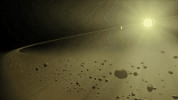
|
|
||||

|
2004-12-09 |
Spitzer Space Telescope |
1386x956x3 | ||
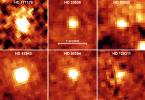
|
|||||

|
2004-12-21 |
Galaxy Evolution Explorer (GALEX) |
GALEX Telescope |
1793x1194x3 | |
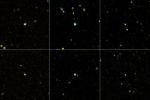
|
|||||

|
2004-12-22 |
Galaxy Evolution Explorer (GALEX) |
GALEX Telescope |
587x473x3 | |
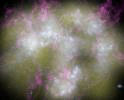
|
|||||

|
2004-12-27 | Titan |
Cassini-Huygens |
ISS - Narrow Angle |
1024x1024x1 |
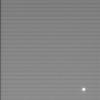
|
|||||

|
2005-01-07 | Iapetus |
Cassini-Huygens |
ISS - Narrow Angle |
1020x1020x1 |
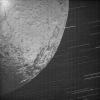
|
|||||

|
2005-01-11 |
Spitzer Space Telescope |
3000x2400x3 | ||
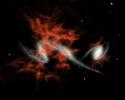
|
|||||

|
2005-01-12 | Trifid Nebula |
Spitzer Space Telescope |
IRAC Multiband Imaging Photometer (MIPS) |
2841x1846x3 |
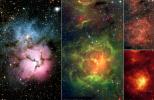
|
|||||

|
2005-01-12 |
Spitzer Space Telescope |
IRAC Multiband Imaging Photometer (MIPS) |
2816x1404x3 | |
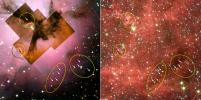
|
|||||

|
2005-03-22 |
Spitzer Space Telescope |
IRAC Multiband Imaging Photometer (MIPS) |
2220x2374x3 | |

|
|||||

|
2005-04-11 | NGC 300 |
Galaxy Evolution Explorer (GALEX) |
Ultraviolet/Visible Camera |
1273x967x3 |
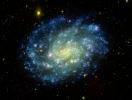
|
|||||

|
2005-04-18 | RCW 79 |
Spitzer Space Telescope |
IRAC |
2440x2440x3 |
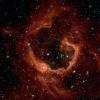
|
|||||

|
2005-05-04 | Messier 104 |
Hubble Space Telescope Spitzer Space Telescope |
IRAC Visible Light |
3000x1681x3 |
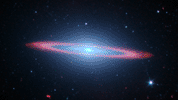
|
|||||

|
2005-05-16 | Tempel 1 |
Kitt Peak National Observatory's 2.1 m Telescope |
801x701x3 | |
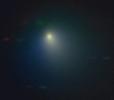
|
|||||

|
2005-05-30 | Carina Nebula |
Spitzer Space Telescope |
IRAC |
6614x5196x3 |
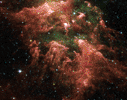
|
|||||

|
2005-05-31 | GJ 3685A |
Galaxy Evolution Explorer (GALEX) |
GALEX Telescope |
1280x960x3 |
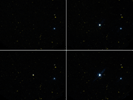
|
|||||

|
2005-05-31 |
Galaxy Evolution Explorer (GALEX) |
GALEX Telescope |
2154x2154x3 | |
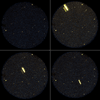
|
|||||

|
2005-05-31 |
Galaxy Evolution Explorer (GALEX) |
GALEX Telescope |
2154x2154x3 | |
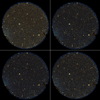
|
|||||

|
2005-06-01 | Mars |
Mars Exploration Rover (MER) |
Panoramic Camera |
250x1000x3 |
|
|
|||||

|
2005-06-10 | Cassiopeia A |
Spitzer Space Telescope |
IRAC |
2826x774x3 |

|
|||||

|
2005-06-10 | Cassiopeia A |
Spitzer Space Telescope |
IRAC |
2842x1622x3 |
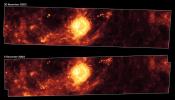
|
|||||

|
2005-06-10 | Cassiopeia A |
Hubble Space Telescope Spitzer Space Telescope |
IRAC Visible Light Chandra X-ray Telescope |
1835x1348x3 |
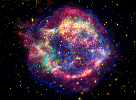
|
|||||

|
2005-06-28 | Tempel 1 |
Deep Impact |
Medium Resolution Instrument (MRI) |
480x150x1 |

|
|||||

|
2005-07-13 | Cygnus |
W. M. Keck Observatory |
Keck I Telescope |
640x480x3 |
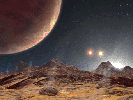
|
|||||

|
2005-07-13 | Cygnus |
W. M. Keck Observatory |
Keck I Telescope |
3000x2400x3 |
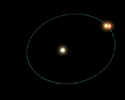
|
|||||

|
2005-07-25 | NGC 4625 |
Galaxy Evolution Explorer (GALEX) |
Ultraviolet/Visible Camera |
872x872x3 |
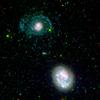
|
|||||

|
2005-07-25 | NGC 4625 |
Galaxy Evolution Explorer (GALEX) |
Ultraviolet/Visible Camera |
872x872x3 |
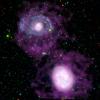
|
|||||

|
2005-07-25 | NGC 4625 |
Galaxy Evolution Explorer (GALEX) |
Ultraviolet/Visible Camera |
872x872x3 |
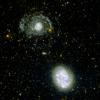
|
|||||

|
2005-07-27 |
Spitzer Space Telescope |
Infrared Spectrograph (IRS) |
2361x1506x3 | |
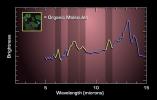
|
|||||

|
2005-08-03 | Eris |
Samuel Oschin Telescope Palomar Adaptive Optics System |
603x200x3 | |

|
|||||

|
2005-08-19 | S Rings |
Cassini-Huygens |
ISS - Wide Angle |
1024x1024x1 |
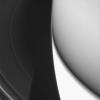
|
|||||

|
2005-09-05 | S Rings |
Cassini-Huygens |
ISS - Narrow Angle |
894x898x1 |
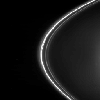
|
|||||

|
2005-09-11 | Phobos |
Mars Exploration Rover (MER) |
Panoramic Camera |
1024x1024x1 |
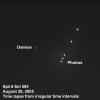
|
|||||

|
2005-09-11 | Mars |
Mars Exploration Rover (MER) |
Panoramic Camera |
1024x1024x1 |
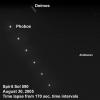
|
|||||

|
2005-09-11 | Mars |
Mars Exploration Rover (MER) |
Panoramic Camera |
1024x1024x1 |
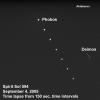
|
|||||

|
2005-09-11 | Mars |
Mars Exploration Rover (MER) |
Panoramic Camera |
2100x1075x1 |
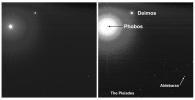
|
|||||

|
2005-09-11 | Mars |
Mars Exploration Rover (MER) |
Panoramic Camera |
1091x1161x6 |

|
|||||

|
2005-09-27 | HUDF-JD2 |
Hubble Space Telescope Spitzer Space Telescope |
IRAC Visible Light |
2699x1838x3 |
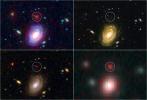
|
|||||

|
2005-10-13 | M31 |
Spitzer Space Telescope |
MIPS |
8193x2410x3 |

|
|||||

|
2005-10-13 | M33 |
Galaxy Evolution Explorer (GALEX) |
GALEX Telescope |
2904x2904x3 |
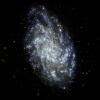
|
|||||

|
2005-10-20 |
Spitzer Space Telescope |
3000x2400x3 | ||
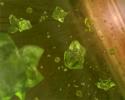
|
|||||

|
2005-10-26 | Mars |
Mars Exploration Rover (MER) |
Panoramic Camera |
4158x1050x1 |

|
|||||

|
2005-10-27 |
Spitzer Space Telescope |
IRAC |
561x561x3 | |
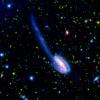
|
|||||

|
2005-10-28 |
Spitzer Space Telescope |
IRAC |
1600x1600x3 | |
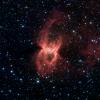
|
|||||

|
2005-11-02 |
Hubble Space Telescope |
WFPC2 |
1518x1497x3 | |
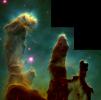
|
|||||

|
2005-11-09 |
Spitzer Space Telescope |
IRAC |
3426x2548x3 | |
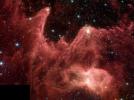
|
|||||

|
2005-11-15 | Perseus |
Spitzer Space Telescope |
IRAC |
1291x1663x3 |

|
|||||

|
2005-12-01 |
Spitzer Space Telescope |
IRAC |
848x711x3 | |
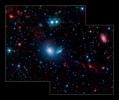
|
|||||

|
2005-12-05 | Mars |
Mars Exploration Rover (MER) |
Panoramic Camera |
1024x1024x1 |
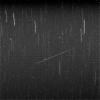
|
|||||

|
2005-12-05 | Mars |
Mars Exploration Rover (MER) |
Panoramic Camera |
1024x1024x1 |
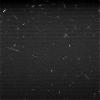
|
|||||

|
2005-12-13 | Milky Way |
Spitzer Space Telescope |
IRAC |
27000x6000x3 |

|
|||||

|
2005-12-22 | Carina Nebula |
Cassini-Huygens |
ISS - Wide Angle |
1020x1020x1 |
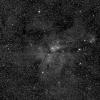
|
|||||

|
2005-12-22 |
Spitzer Space Telescope |
IRAC Multiband Imaging Photometer (MIPS) |
2310x3897x3 | |

|
|||||

|
2006-01-09 |
Galaxy Evolution Explorer (GALEX) |
GALEX Telescope |
2264x2260x3 | |
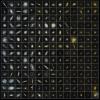
|
|||||

|
2006-01-10 | Milky Way |
Spitzer Space Telescope |
IRAC |
7002x5050x3 |
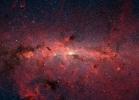
|
|||||

|
2006-01-10 | Milky Way |
Spitzer Space Telescope |
IRAC |
7002x5050x3 |
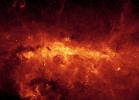
|
|||||

|
2006-01-11 | Cartwheel Galaxy |
Galaxy Evolution Explorer (GALEX) Hubble Space Telescope Spitzer Space Telescope |
Chandra X-ray Telescope GALEX Telescope Infrared Array Camera (IRAC) Visible Light |
1500x1500x3 |
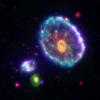
|
|||||

|
2006-02-02 | Mars |
Mars Exploration Rover (MER) |
Microscopic Imager |
1024x1024x1 |
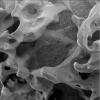
|
|||||

|
2006-02-08 | R 66 |
Spitzer Space Telescope |
Infrared Spectrometer (IRS) |
5140x2400x3 |
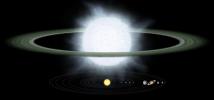
|
|||||

|
2006-02-15 |
Spitzer Space Telescope |
IRAC |
706x869x3 | |

|
|||||

|
2006-02-15 |
Spitzer Space Telescope |
Infrared Spectrograph (IRS) |
3000x2400x3 | |
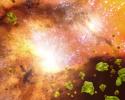
|
|||||

|
2006-03-03 |
Spitzer Space Telescope |
IRAC Near Infrared Spectrometer |
966x966x3 | |
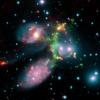
|
|||||

|
2006-03-06 | Mars |
Mars Exploration Rover (MER) |
Panoramic Camera Rock Abrasion Tool (RAT) |
1021x1024x3 |
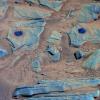
|
|||||

|
2006-03-10 | Deimos |
Mars Reconnaissance Orbiter (MRO) |
Optical Navigation Camera |
791x700x3 |
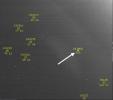
|
|||||

|
2006-03-16 |
Spitzer Space Telescope |
IRAC |
480x640x3 | |

|
|||||

|
2006-03-21 |
Spitzer Space Telescope |
IRAC |
2243x2240x3 | |
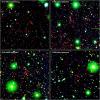
|
|||||

|
2006-04-05 |
Spitzer Space Telescope |
3200x2400x3 | ||
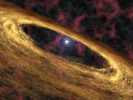
|
|||||

|
2006-04-05 |
Spitzer Space Telescope W. M. Keck Observatory |
IRAC Keck I Telescope |
2571x2130x3 | |
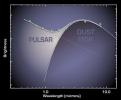
|
|||||

|
2006-04-05 |
Spitzer Space Telescope |
3000x2400x3 | ||
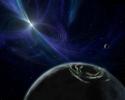
|
|||||

|
2006-04-24 | M82 Galaxy |
Hubble Space Telescope Spitzer Space Telescope |
Chandra X-ray Telescope Infrared Array Camera (IRAC) Visible Light |
640x480x3 |
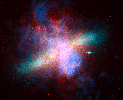
|
|||||

|
2006-04-25 | Enceladus |
Cassini-Huygens |
ISS - Wide Angle |
899x791x1 |
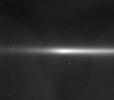
|
|||||

|
2006-04-26 |
Hubble Space Telescope Spitzer Space Telescope |
IRAC Visible Light |
2905x1486x3 | |
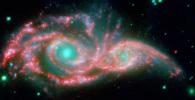
|
|||||

|
2006-04-26 |
Spitzer Space Telescope |
IRAC |
1010x1010x3 | |
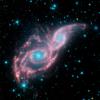
|
|||||

|
2006-05-04 | Titan |
Cassini-Huygens |
Descent Imager/Spectral Radiometer |
516x387x3 |
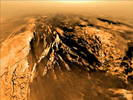
|
|||||

|
2006-05-11 |
Spitzer Space Telescope |
IRAC MIPS Visible Light |
900x859x3 | |
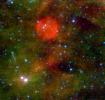
|
|||||

|
2006-05-29 | Saturn |
Cassini-Huygens |
ISS - Narrow Angle |
747x653x1 |
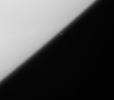
|
|||||

|
2006-06-05 | Messier 31 |
Spitzer Space Telescope |
IRAC |
720x486x3 |
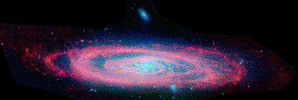
|
|||||

|
2006-06-06 |
Hubble Space Telescope Spitzer Space Telescope |
IRAC Multiband Imaging Photometer (MIPS) |
1778x1778x3 | |
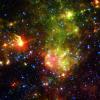
|
|||||

|
2006-06-09 |
Spitzer Space Telescope |
IRAC |
2325x2329x3 | |
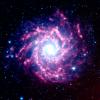
|
|||||

|
2006-07-05 | S Rings |
Cassini-Huygens |
Imaging Science Subsystem |
1007x275x3 |

|
|||||

|
2006-07-07 | S Rings |
Cassini-Huygens |
ISS - Narrow Angle |
1024x636x1 |
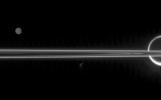
|
|||||

|
2006-07-24 |
Spitzer Space Telescope |
3200x2400x3 | ||
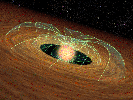
|
|||||

|
2006-07-28 |
Galaxy Evolution Explorer (GALEX) |
GALEX Telescope |
2574x858x3 | |
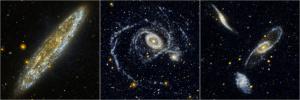
|
|||||

|
2006-08-15 | Orion |
Spitzer Space Telescope |
IRAC |
3220x6000x3 |

|
|||||

|
2006-08-15 | Orion |
Spitzer Space Telescope |
IRAC |
2240x2086x3 |
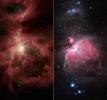
|
|||||

|
2006-08-15 | Orion |
Spitzer Space Telescope |
IRAC |
19937x6972x3 |
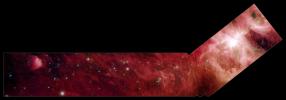
|
|||||

|
2006-08-15 | Orion |
Spitzer Space Telescope |
IRAC |
3000x1800x3 |
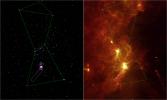
|
|||||

|
2006-08-23 |
Galaxy Evolution Explorer (GALEX) |
3000x2400x3 | ||
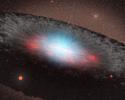
|
|||||

|
2006-08-23 |
Galaxy Evolution Explorer (GALEX) |
3000x2400x3 | ||
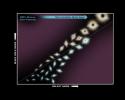
|
|||||

|
2006-09-01 |
Spitzer Space Telescope |
IRAC |
6000x6000x3 | |
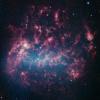
|
|||||

|
2006-09-01 |
Spitzer Space Telescope |
IRAC Multiband Imaging Photometer (MIPS) |
6000x6000x3 | |
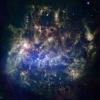
|
|||||

|
2006-09-06 | Pleiades |
Cassini-Huygens |
ISS - Wide Angle |
687x559x1 |
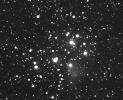
|
|||||

|
2006-09-28 |
Galaxy Evolution Explorer (GALEX) Spitzer Space Telescope |
MIPS Ultraviolet/Visible Camera |
7430x2410x3 | |

|
|||||

|
2006-10-03 |
Spitzer Space Telescope |
MIPS |
1500x558x3 | |

|
|||||

|
2006-10-11 | S Rings |
Cassini-Huygens |
ISS - Narrow Angle |
760x990x1 |

|
|||||

|
2006-10-12 |
Spitzer Space Telescope |
MIPS |
2396x2680x3 | |

|
|||||

|
2006-10-26 | Cassiopeia A |
Spitzer Space Telescope |
IRAC |
1600x1600x3 |
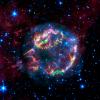
|
|||||

|
2006-10-27 |
Spitzer Space Telescope |
IRAC Multiband Imaging Photometer (MIPS) |
3000x2300x3 | |
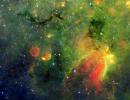
|
|||||

|
2006-11-07 |
Spitzer Space Telescope |
IRAC Ultraviolet/Visible Camera |
6000x6000x3 | |
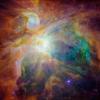
|
|||||

|
2006-12-08 |
Spitzer Space Telescope |
MIPS |
2861x1439x3 | |
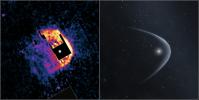
|
|||||

|
 |
 |
 |
 |
 |
 |
 |
 |
 |
 |

|
| 1-100 | 101-200 | 201-300 | 301-400 | 401-500 | 501-600 | 601-700 | 701-800 | 801-900 | 901-1000 |
| Currently displaying images: 101 - 200 of 985 |